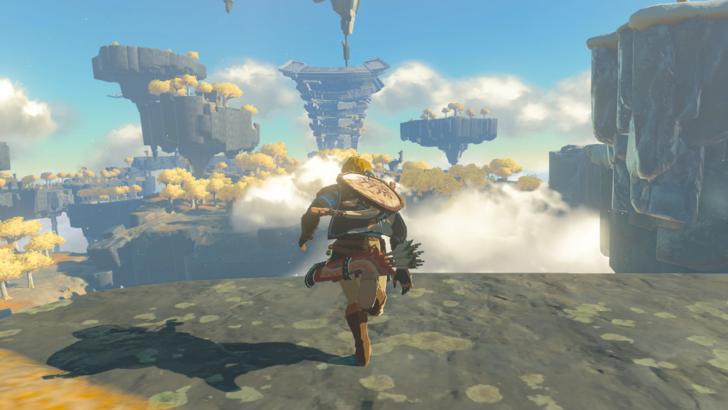
Zelda developers wanted to create an "entirely physics-driven world" for Tears of the Kingdom. Read on to learn more insight into their innovative approach to world-building and gameplay mechanics.
Tears of the Kingdom Devs Designed The Game as an "Entirely Physics-Driven World"
TOTK’s Development was "Very, Very Difficult"

During last week's Game Developers Conference (GDC), The Legend of Zelda: Tears of the Kingdom(TOTK) technical director Takuhiro Dohta, lead physics engineer Takahiro Takayama, and sound programmer Junya Osada talked about the intricacies involved in bringing their vision for the game to life.
Their objective was to build upon the concept of "multiplicative gameplay," a hallmark of Breath of the Wild, wherein actions and objects synergize to yield endless possibilities. In their pursuit of this philosophy, they aimed to expand the gameplay by enabling the attachment of multiple objects to one another which was as we know it today as Link’s Ultrahand’s ability.
Upon witnessing the prototype in action, Takayama was initially excited by the potential of the concept. However, he recognized it was going to be a "very, very difficult" process to create their vision for TOTK, as evidenced by a montage of buggy clips shown in the talk.
Despite doubts surfacing about their capability to tackle such a daunting task, the team exhibited courage and determination to press onward. Guided by their overarching goal of crafting an "entirely physics-driven world," and in doing so, "create a system where unique interactions occur, without dedicated implementation."
Takayama highlighted the inherent chaos caused by the freedom afforded by the Ultrahand during development. Their response to this challenge was to eliminate all non-physics items, transitioning to a fully physics-driven environment.
Developers Wanted to Create a Higher Level of Freedom for Players

A prime example of this approach is the alteration in how gates functioned, serving as a confirmation that their decision to embrace physics entirely was the correct path. This change enabled players to tackle shrine puzzles and navigate the world in diverse ways. Takayama emphasized that this shift ensured a world devoid of self-destruction, where players could freely "express imagination and creativity, without destroying the world."
This concept extended to the implementation of vehicles, requiring cohesive collaboration from the entire team. They prioritized physics at the forefront of their vehicle creation process, meticulously integrating elements like wheels and steering sticks. A dedicated testing room was established to ensure the functionality of each object at all times, allowing the artists to focus on crafting visually striking designs without compromising functionality.
Even sound design was influenced by physics principles, Dohta revealed. While physics and sound are distinct fields, they share commonalities as law-based systems, both adding layers of complexity to the game's interactions. This synergy led to the creation of a system that not only enhances player experiences but also uncovers new discoveries for the developers themselves.

Rather than assigning specific sounds to vehicles or horses, the team opted for a more intricate approach. Each element, such as wheels and chains, received its own distinct sound which collectively produced the expected sound of the entire object, such as a cart driving across the road. This methodology was applied universally, from paddle boats to planes. Osada noted the seamless integration of these sounds, remarking on his lack of recollection of creating them, prompting the director to liken the process to a "physics engine for sound."
Physics played a crucial role in every aspect of game development, extending even to the realm of level design and artistic detailing. Level designers meticulously integrated physics principles into the design of shrines, ensuring that every aspect adhered to realistic physical interactions. Similarly, artists carefully crafted the design of pots with physics in mind, ensuring that their appearance and functionality aligned seamlessly with the game's overarching physics system.
"With Tears of the Kingdom, we aimed to create an even higher level of freedom. As a result, rather than adapting each object's movement, the physics team created a system that makes objects move. And rather than creating every sound you heard in the game, the sound team created a system that makes it sound that way."
Dohta concluded by emphasizing the essence of their approach: "Rather than creating unique interactions, create a system that causes unique interactions to occur. I believe this was the essence of the evolution of physics and sound in Tears of the Kingdom."
Source:
Zelda: Tears of the Kingdom devs explain why it was a much bigger overhaul than you'd think



















